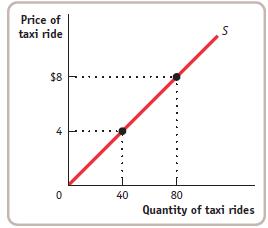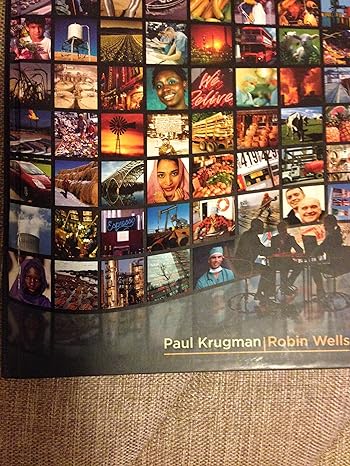1.10. The accompanying diagram illustrates a taxi drivers individual supply curve (assume that each taxi ride is...
Question:
1.10. The accompanying diagram illustrates a taxi driver’s individual supply curve (assume that each taxi ride is the same distance).

a. Suppose the city sets the price of taxi rides at $4 per ride, and at $4 the taxi driver is able to sell as many taxi rides as he desires. What is this taxi driver’s producer surplus?
(Recall that the area of a right triangle is 1⁄2 × the height of the triangle × the base of the triangle.)
b. Suppose that the city keeps the price of a taxi ride set at $4, but it decides to charge taxi drivers a “licensing fee.”
What is the maximum licensing fee the city could extract from this taxi driver?
c. Suppose that the city allowed the price of taxi rides to increase to $8 per ride. Again assume that, at this price, the taxi driver sells as many rides as he is willing to offer.
How much producer surplus does an individual taxi driver now get? What is the maximum licensing fee the city could charge this taxi driver?
Step by Step Answer:







